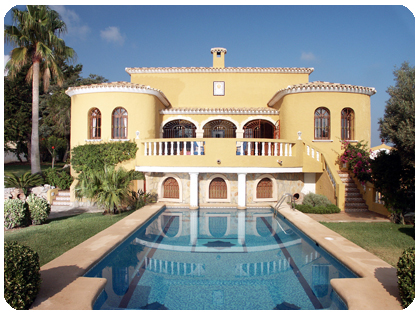Rainhill
Prescot
Merseyside L35 0LH
UK: (00) +44 7939896098
Spain: (00) 346969953103
Telephone: 0845 1082209
email: info@costablancahomes.org.uk
Design and Hosting by:
bdimedia.com
| >>more | |
Adsubia |
|
 |
|
| L' Alfàs del
Pi was originally an inland fortified village providing shelter from the Berber pirates. The name 'Alfàs' was originally Moor and means 'sown land'. Its traditional economy is linked to the land and the growing of fruits and almonds and the extraction of metals and gypsum. Tourism has served as a platform to develop the town, the people and the cultural activities of L' Alfàs del Pi. It has been possible to control the growth of the town by ensuring that residential developments respect a limit of 4 storeys and by guaranteeing that 50 % of developed land is made up of green areas. Of the 12,547 inhabitants, 6,000 are foreigners from some 54 different countries. To accompany these human and urban features L'Alfàs del Pi has also created an infrastructure destined to improve the quality of life of its inhabitants - a multi-sports stadium, Municipal Arts Centre, Health Centre and amenities for all are some of the various services on offer. The Sea promenade is known as the Promenade of Stars as it contains the names of famous actors who have visited L' Alfàs del Pi during the annual Cinema Festival in July. |
|
 |
|
Altea |
|
 |
|
Beniardá |
|
 |
|
Benidorm's beaches and range of leisure amenities explain why has it has become Costa Blanca's main tourist area. Benidorm has some of the best beaches in the world. The fine sand, cleaned daily, the quality of the services and the transparency of the water are the main reasons given by Benidorm's many visitors. There is a small cove between the Playa de Poniente and the old town centre, known as the Playa del Mal Pas, which can be reached from the port or from stairs that descend from the castle. The historical centre is located around the Canfali vantage point, which is the most emblematic image of Benidorm with a white stone balcony and a vantage point. The neoclassical church dedicated to St James the Apostle is also located in this area. The Levante beach can be reached from the Plaza del Castillo either by walking down through the narrow white streets, or through the town's commercial district. The Aiguera Park, designed by Ricardo Bofill, is Benidorm's largest park and divides the town in two. Benidorm's attraction lies in the variety of its leisure amenities, with a wide range of activities for foreign and national tourists, children, teenagers and pensioners. |
|
 |
|
Bolulla |
|
| >>more | |



